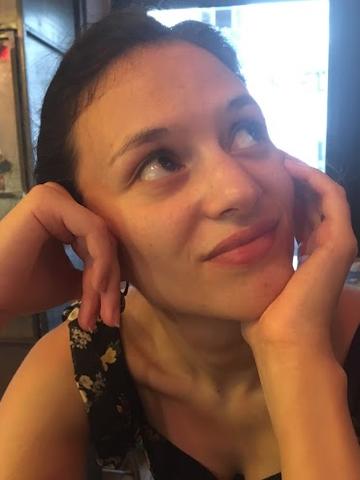Dr Maria Christodoulou from the Department of Statistics offers tips from her experience of running 'Perceptions of Ageing' at the 2019 Festival of Social Science.
How would you describe your 2019 Festival of Social Science event?
We invited members of the public to explore their perceptions of ageing through illustration, colour, and collage at two drop-in sci-art workshops – one in Reading and one at the Jam Factory in Oxford.
They went so well that we are re-running the workshop (twice, by popular demand!) as part of British Science Week 2020.

Dr Maria Christodoulou
And how did you find the experience?
Hosting an event as part of the Festival of Social Science was quite a new venture for us, but my PI was very supportive of the idea. As an opportunity that fell outside the ‘normal’ boundaries of my work, I had a lot of freedom to think creatively about how to engage people in our research, which was really refreshing.
How did you come up with your event idea?
We had an idea for a citizen science event about ageing, but first we wanted to test people’s perceptions of ageing. It was a great opportunity to approach an interdisciplinary science artist whose work I knew and with whom I was really keen to collaborate.
What went well? What did you enjoy about the event?
We were really pleased with the turn out – about 25 members of the public dropped in across the two days (despite the terrible weather!), and really engaged with all our activities.
It was fascinating how people’s perceptions of ageing differed depending on what or who is ageing. For example, most adults considered the ageing process of plants to be one of strength and beauty: growing from seed, to sapling, to tree. But as soon as people had an emotional attachment (considering for example the ageing process of a relative or pet), they saw ageing as a process of decline. Children, on the other hand, seemed to show people as becoming only more beautiful and more complex as they aged. Our activities picked up on these changes in attitude towards ageing.
The effect of exploring these attitudes generated lots of conversation, too. Almost all participants that had been strangers to one another at the beginning were talking about the activities by the end, which was really encouraging.

Participants explore different materials as part of Perceptions of Ageing
Were there specific challenges?
I’d never worked with the artist before, but we both enjoyed the challenge of coming up with ideas that would give the audience plenty to engage with that they didn’t have to be good at. Once we had the ideas, I tested them out with friends and family to discover what worked well – that was really key. It took a lot of preparation, but it really paid off!
Our venues were great to work with and very supportive in promoting the events. Unfortunately, one of the planned venues had to cancel quite last minute for reasons beyond their control, but they’ve kindly invited us back for free in the near future – so, every cloud, etc.!
What advice would you give to other researchers considering hosting an event?
Non-toxic crayons are harder to find than you might think! But seriously, if you’re doing creative activities with children or vulnerable adults, do remember to undertake a risk assessment and consider things like safety scissors. Your host venue will most likely have public liability insurance, but it’s worth checking that out, too.